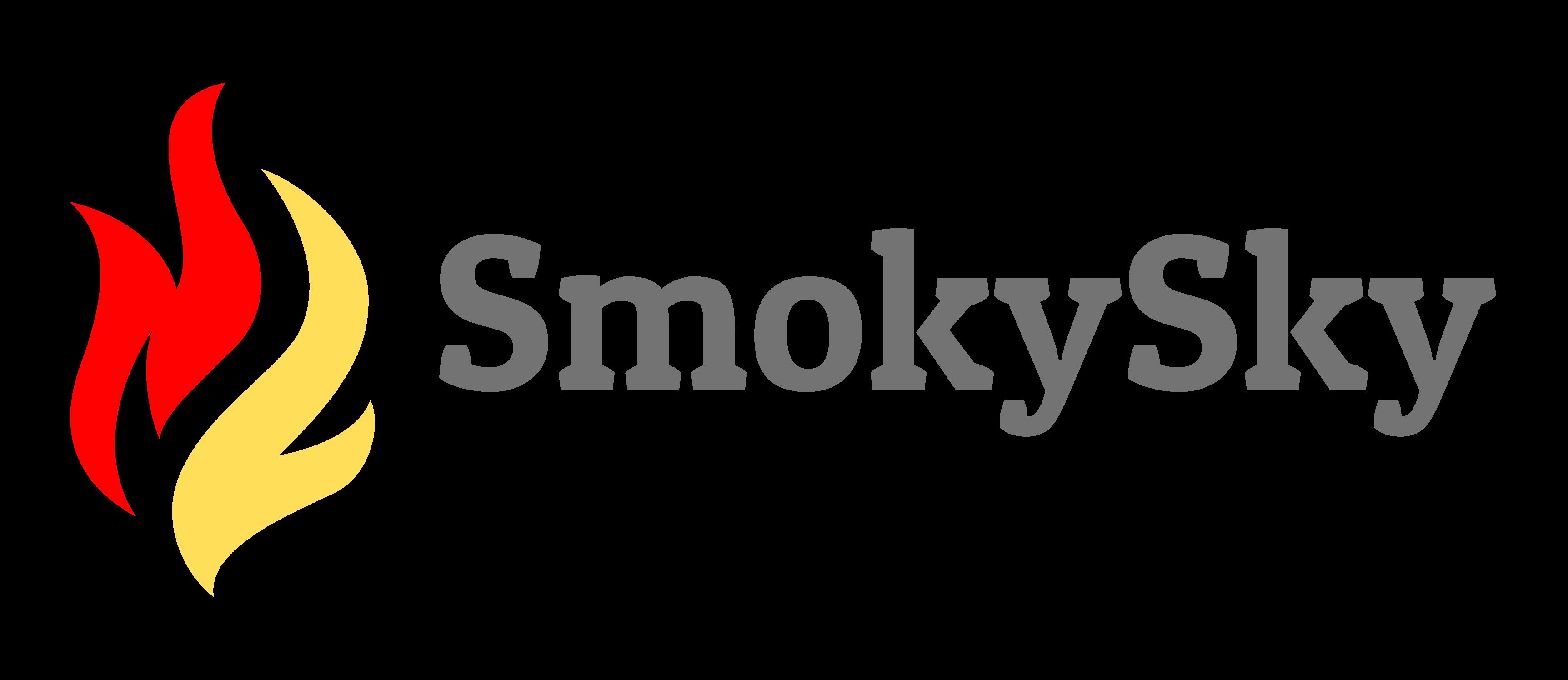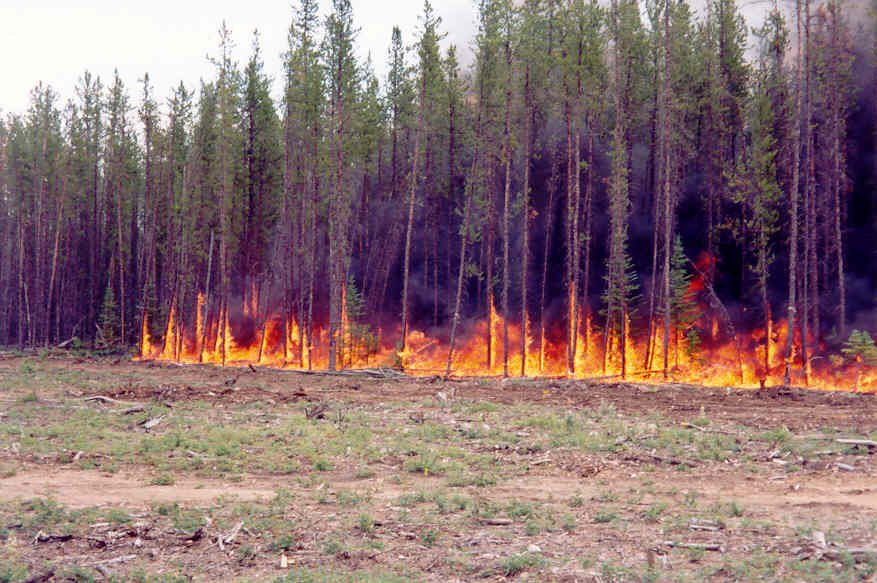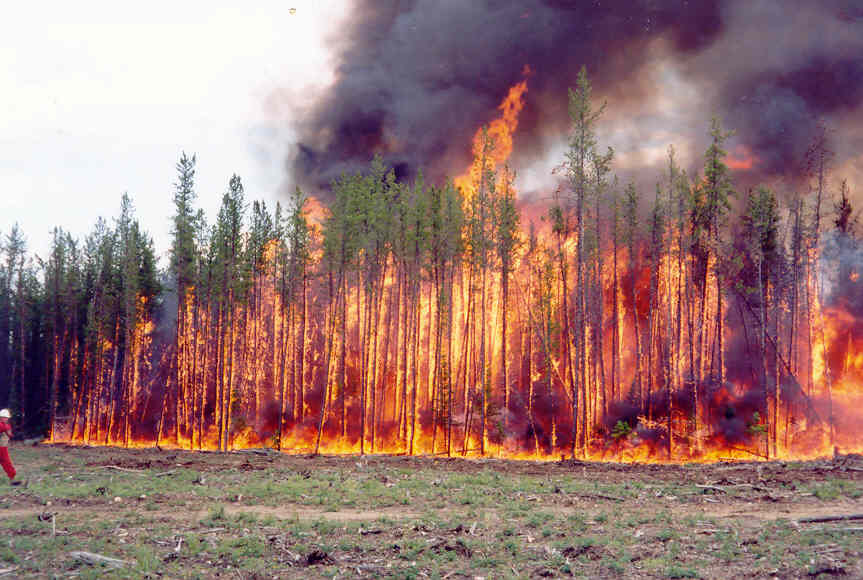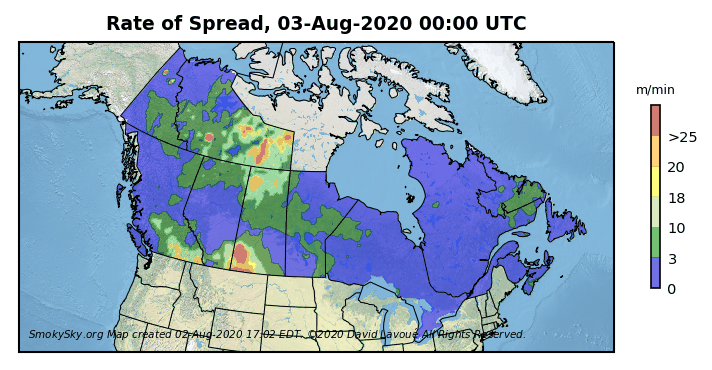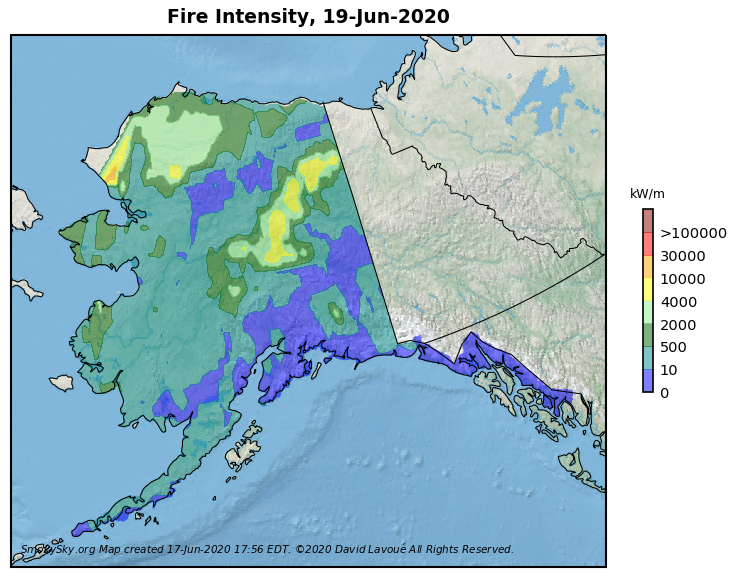Fire Behavior
Fire spread and combustion processes highly depend on historical and current meteorological conditions, vegetation fuel patterns, and topography. Fires spread by burning fuels at the surface and can also spread vertically to reach upper-level fuels. Under specific conditions they can develop into crown fires which spread in the tree canopy.
There are also ground fires which can consume large amounts of organic layers below the surface for long periods of time. Such fires can last for long periods of time. In fact, contrary to popular belief, northern high-latitude fires ignited in the summertime can survive all winter long by smouldering in the low oxygen environment below the snow cover.
|
Surface fire during the International Crown Fire Modeling Experiment (ICFME) 1998. |
Crown fire during ICFME 1998. |
Fire management agencies have developed fire behavior models from observations of experimental and prescribed burns, as well as wildfires. These are physical-statistical models to predict spread rate, fuel consumption, and intensity level of an active fire. Inputs include fire location, weather conditions, vegetation types and topography.
Fire intensity is an important component of the fire behavior for forest fire management purposes. Its value indicates whether a surface fire is likely to reach the forest canopy periodically or continuously.
Fire Growth
The head of the fire spreads fastest with the wind, while the back of the fire burns slowest against the wind. Field observations and experimental studies have shown that the fire front typically spreads as an elliptical wave under conditions characterized by a uniform wind field, flat terrain, and no obstacles. However, when at least one of these conditions is not fulfilled, a more complex numerical approach has to be employed to realistically calculate the fire front spread.
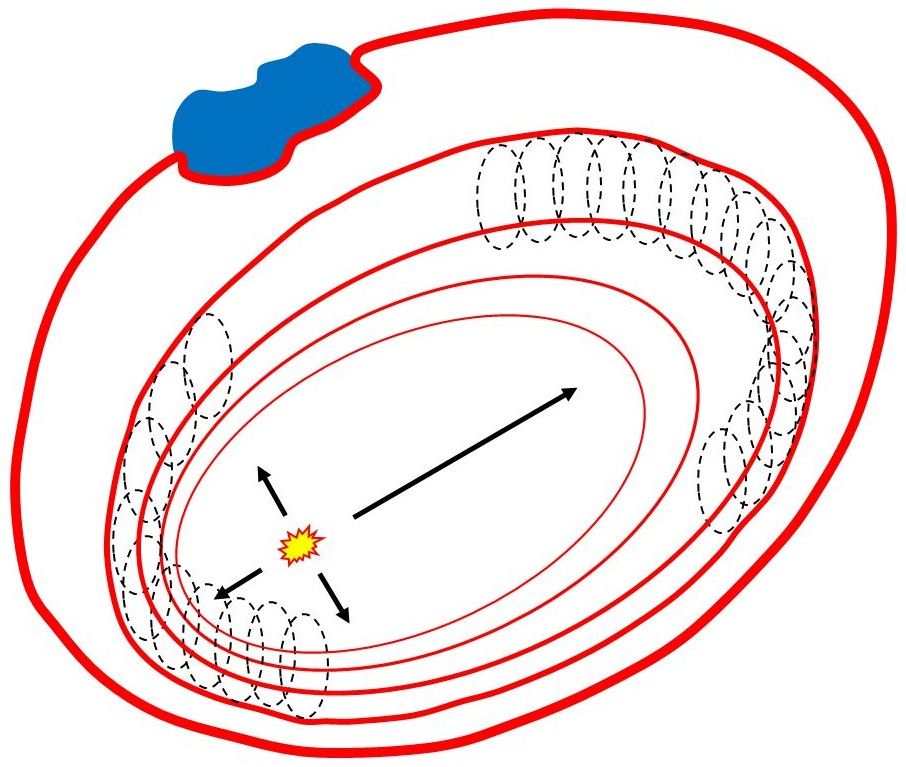
Fire growth following the principle of elliptical wavelet propagation. |
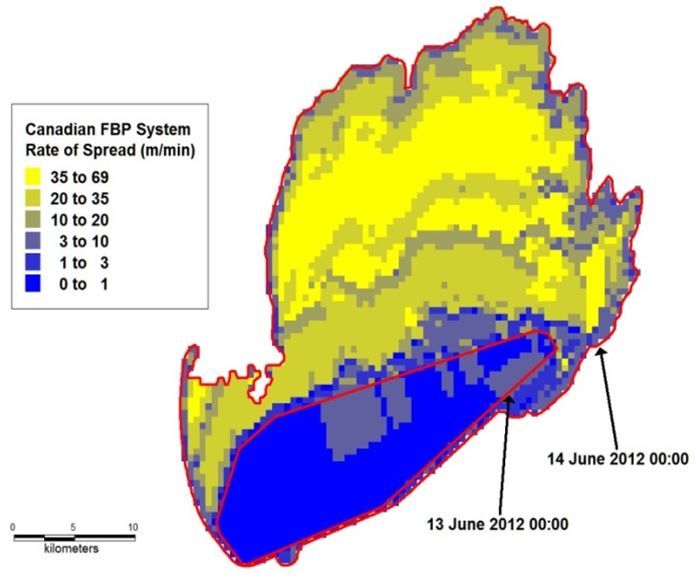
Fire growth simulated with a numerical model. |
Fire Occurrences ![]()
![]() Smoke Emissions
Smoke Emissions
Last Modified on 3 May 2021
